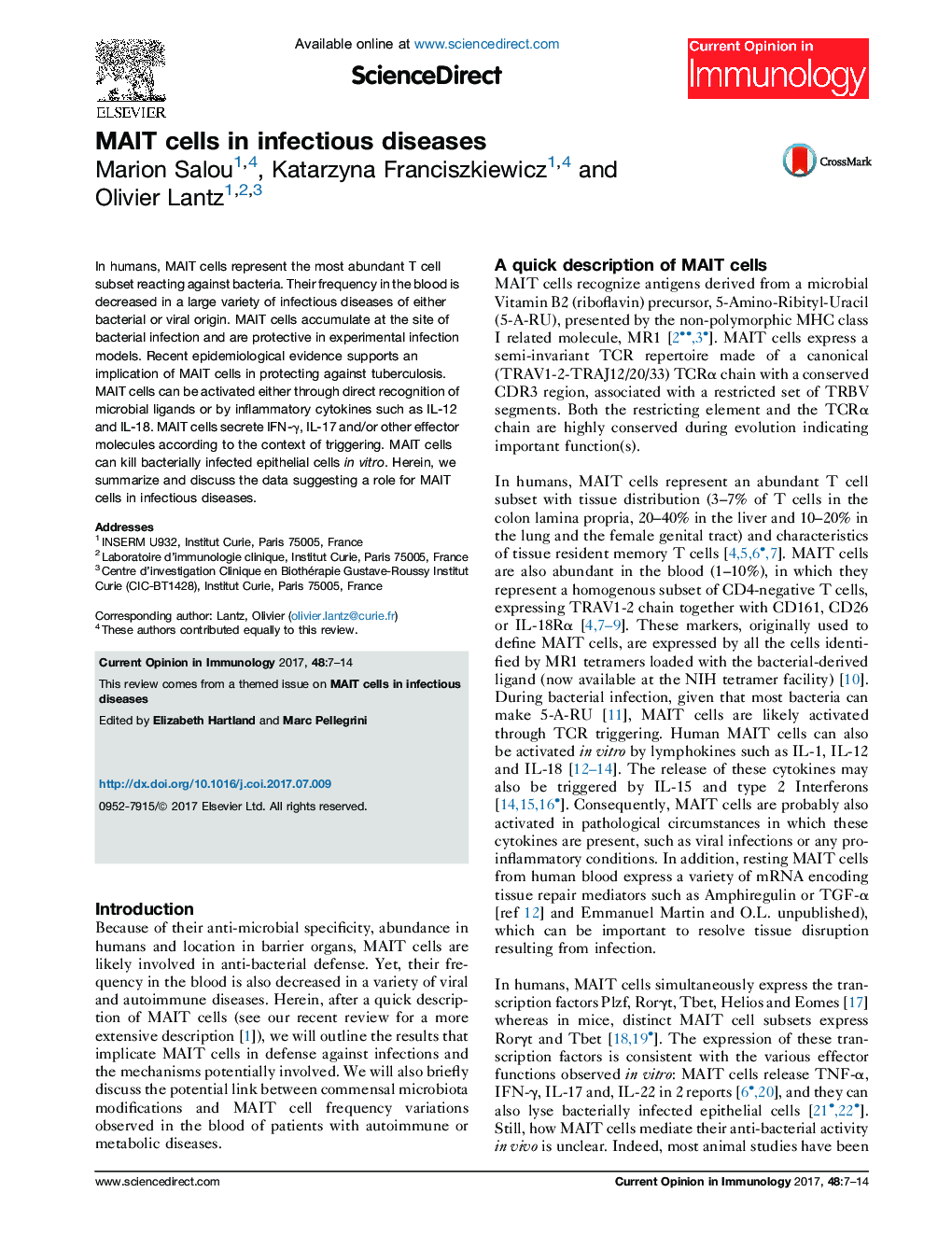| کد مقاله | کد نشریه | سال انتشار | مقاله انگلیسی | نسخه تمام متن |
|---|---|---|---|---|
| 5665668 | 1591293 | 2017 | 8 صفحه PDF | دانلود رایگان |

- MAIT cells decrease in the blood and migrate to the site of infection.
- MAIT cells kill bacterially infected epithelial cells.
- Epidemiological evidence indicate a protective role for MAIT cells in tuberculosis.
- The significance of the MAIT decrease observed in viral diseases is unclear.
In humans, MAIT cells represent the most abundant T cell subset reacting against bacteria. Their frequency in the blood is decreased in a large variety of infectious diseases of either bacterial or viral origin. MAIT cells accumulate at the site of bacterial infection and are protective in experimental infection models. Recent epidemiological evidence supports an implication of MAIT cells in protecting against tuberculosis. MAIT cells can be activated either through direct recognition of microbial ligands or by inflammatory cytokines such as IL-12 and IL-18. MAIT cells secrete IFN-γ, IL-17 and/or other effector molecules according to the context of triggering. MAIT cells can kill bacterially infected epithelial cells in vitro. Herein, we summarize and discuss the data suggesting a role for MAIT cells in infectious diseases.
Journal: Current Opinion in Immunology - Volume 48, October 2017, Pages 7-14